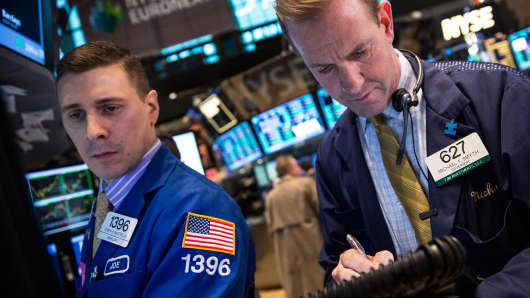The Fed factor
If, indeed, inflation were set to take off and the Fed followed with a meaningful round of rate hikes, then I would agree that the market is in imminent danger. Fed ChairJanet Yellen has said that the Fed will not be raising interest rates unless, or until, the unemployment rate approaches 5.2 percent to 5.6 percent and inflation rises above 2 percent. That may be anywhere from a year to 18 months away, according to the Fed's best estimates.
Prior to the stock market's peak in October of 2007, the Fed raised interest rates 17 consecutive times in the previous 18 months, deflating the credit, real-estate and stock-market bubbles, simultaneously, and leading to a 50-percent plunge in stocks that lasted until March of 2009. Similarly, prior to the bursting of the Internet bubble, the Fed raised rates aggressively until the bubble burst.
Both bubbles, one could argue, may have collapsed under their own weight, but in my study of market history, it takes more than tapering to kill a secular bull market, which is what I believe we are experiencing today.
Years ago, one of my best sources,hedge-fund investor, Stan Druckenmiller (Soros Management, Duquesne Capital), who sports one of the best investment records in market history, told me that his extensive analysis of the stock market showed that only two factors precipitated bear markets: rising interest rates, or the onset of war. Clearly there is a risk that the Russian/Ukraine conflict is slipping out of control and could lead to military action between them, and involve both the U.S. and Europe. But unless this conflagration rises to the level of a global military conflict, it will most likely increase the volatility of the financial markets, not usher in a Russian bear. (If one is worried about Russia precipitating not only a war, but also a major market pullback, I would suggest hedging with oil and gold, by using USO, the long-oil ETF and the GLD, the most popular gold ETF.)
Thus, looking at relative, rather than absolute, valuations is a more appropriate way to gauge whether or not we are at an important market peak.
The "average" stocks went nowhere from 1998-2008, a period some of us believe to be a secular bear market, from which we only began to emerge in March of 2009. Secular bull markets can last 15-20 years, suggesting that this current move in stocks may have another 10-15 years to go, although there will be some nerve-wracking interruptions between now and then.
My case for a secular bull market rests on my strong outlook for the U.S. economy, based on a variety of factors, including the energy revolution, technological innovation and the real-estate recovery.
Read MoreUS poised to become world's only superpower



